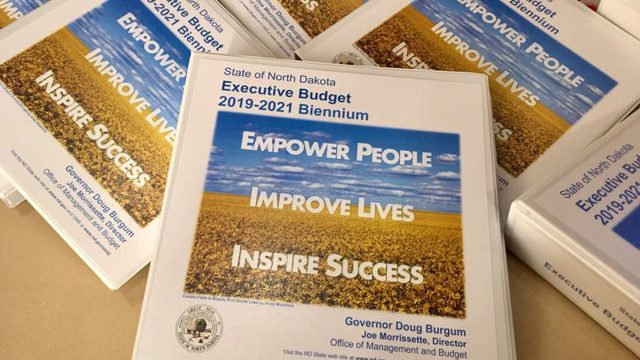Governor Burgum’s First Real Budget Might Be the Most Fiscally Conservative Spending Plan North Dakota Has Seen in Two Decades

Although he was elected to office in the 2016 election cycle, and headed up the executive branch during the 2017 legislative session, the budget Governor Doug Burgum delivered to lawmakers today is really his first.
Burgum had been in office just weeks when he was due to delivered a budget address to the 2017 legislative session, and it would be fair to say that the budget he delivered belonged more to his predecessor Jack Dalrympe than it did to him.
Today we saw what a real Burgum budget looks like, and it may well be the most fiscally conservative spending plan our state has seen in nearly two decades.
Don’t believe me? He’s the trend for general fund spending increases covering the terms in office of Burgum’s two predecessors, Dalymple and former Governor (now Senator) John Hoeven:
And here, via Legislative Council, is what that trend looks like in actual dollars (absent Burgum’s executive budget delivered today). Per the chart, the average biennial increase in general fund spending over the last decade was more than 25 percent:
Outside of the 2015-17 and 2017-19 biennia, where a cratering of commodity prices tanked our state economy and made spending cuts all but mandatory, our political leaders spent in a fashion that would give inebriated mariners a bad name.
Burgum, to his credit, seems set on getting the state’s budget off of a veritable roller coaster of spending and cuts and onto a trend that’s far more sustainable.
You can read the full press release from Burgum’s office about his budget proposal below. Here are some things which caught my eye.
First, I like that we’re re-filling the state’s budget reserve funds:
To create a buffer against volatile commodity prices, the budget moves $315 million from the oil tax-supported Strategic Investment and Improvements Fund (SIIF) into the Budget Stabilization Fund, which was drained last session. With the SIIF transfer and an expected influx of $312 million in excess general fund revenues at the end of the current biennium, the Budget Stabilization Fund would grow to its highest level ever, providing a significant safety net.
Like it or not, North Dakota’s economy is driven by commodities. We’d all like to see our state’s economy get more diverse, and thus more stable, but in the here and now there’s not much we can do about it. This reality means reserves are a necessity. Burgum proposes building those reserves back up, and that’s a smart move.
Though Burgum is also using some funds to shore up the state’s unfunded pension obligations:
The proposed budget directs $265 million from the SIIF to the pension fund to help address its current $1 billion unfunded liability and ensure that it can continue to cover its obligations to retired team members. By taking this action and adopting corresponding policies recommended by an interim committee, the pension will be fully funded in only 18 years.
Again, this is a prudent action for the here and now, but the pensions need long-term reforms so that these unfunded liabilities owed to state workers don’t continue to be a problem. That reform is typically opposed by the state’s public worker unions, but if they continue to roadblock meaningful reform the end game is a fiscal situation none of us wants.
Burgum proposes spending some $300 million in interest earnings from the Legacy Fund (which is closing in on a $6 billion balance). What’s interesting is that the spending – things like $30 million for air traffic control for the UAS industry, $55 million for an infrastructure loan fund, $50 million for the Roosevelt Library in Medora – is the sort of thing we’d normally see paid for through something like the SIIF. But, as is mentioned above, the SIIF fund is being used to re-fill the Budget Stablization or “rainy day” fund.
It’s a bit of an end-run around the restrictions on how Legacy Fund proceeds can be spent. Which isn’t necessarily a bad thing, though sometimes I think we get far too cute about locking all these tax dollars up in funds.
Also worth mentioning is the way Burgum is handling the state payroll. State employees didn’t get an across-the-board pay increase this biennium. Burgum’s budget calls for a 4 percent pay raise in the first year of the next biennium, and a 2 percent raise the second year, along with the state covering the full cost of the expected 12.7 percent increase in health insurance premiums.
That’s generous, though the governor is tempering that by calling for reductions in the number of state employees. He’s asked state agencies to reduce full time equivalent employment by 5 percent.
Here’s the full press release:
[scribd id=395009069 key=key-CT6nVjnI0PBk7WR7PPwn mode=scroll]






